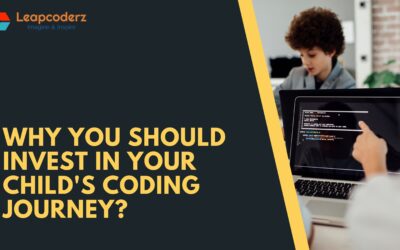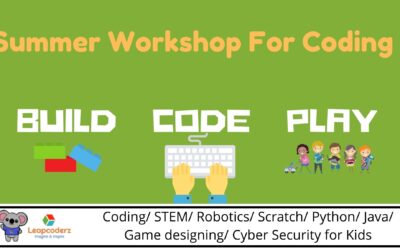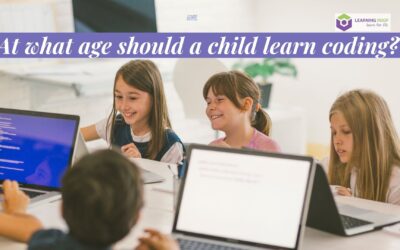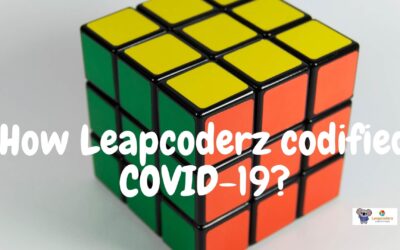Teaching Computational Thinking To Kids
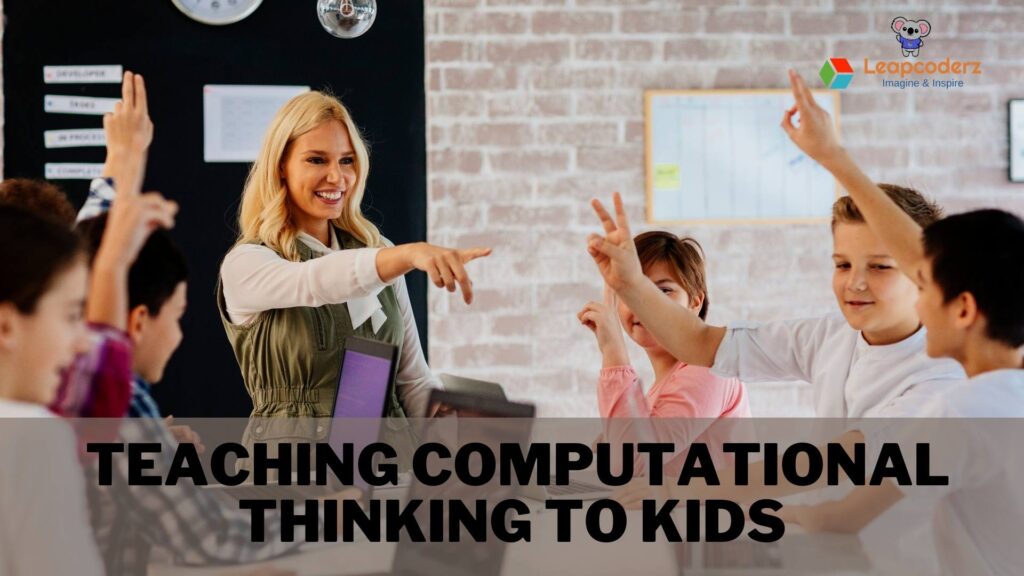
Teaching Computational Thinking To Kids
If we ask of coding, you probably visualize somebody taking a seat at a PC and composing lines of code – making letters, numbers, and images that instruct the PC. However, how would they understand what code to write, and in what manner can a kid figure out how to transform their thoughts into these lines of code? The appropriate answer is-through teaching computational thinking to kids.
Computational thinking is significant not only to coding. In fact, it is one of the most significant professional and fundamental skills in the 21st century. It is the main impetus behind why kids should learn to code — particularly for cultivating critical thinking, problem-solving and creativity.
What is Computational Thinking?
Computational thinking is truly a critical thinking/ problem solving ability. Envision that you have a hamper loaded with messy garments. Here, the problem is: you need clean garments. Clearly, the solution is to clean the garments.
That sounds sufficiently basic, correct? Yet, the process really has a ton of complexities when you consider it. From the start, you may break it into three stages: wash the garments, dry the garments, and crease the garments.
Yet, every one of these means has individual sub steps. When washing the garments, you have to appropriately pack the washer, measure out the cleanser, add cleansing agent, and so forth You additionally need to check for specific sorts of stains that may should be dealt with independently.
Now envision attempting to write set of instructions for cleaning garments. It sounds muddled, isn’t that right? Software engineering is tied in with taking these confounded processes and changing over them into lines of code in a programming language (e.g., Scratch coding, Python, JavaScript). Computational thinking offers a framework for doing exactly that.
Teaching Computational Thinking
The computational thinking process is categorized into four cornerstones. Alongside their utilization in computer programming, each of these skills has true uses that can promptly be introduced to elementary school kids.
- Decomposition — Breaking down the problem into smaller, manageable parts.
- Pattern recognition — Finding similarities within and between problems and experiences.
- Abstraction — Focusing only on important information of the problem, ignoring irrelevant details.
- Algorithm design — Developing a simplified step-by-step solution to the problem.
Undoubtedly, initially it seems challenging to envision kindergartners solving algorithms. They aren’t reluctant to face challenges. By using the normal tendencies of small kids to explore and play, and by empowering critical thinking and problem-solving abilities, we can move their thinking ahead. Computational thinking supports playful minds, yet gives it structure so the skills kids learn can be moved to more mind boggling tasks later on.
Also, it’s presumably much simpler than you may might think to welcome your most youngest students join you as inventors and problem solvers and hop into the universe of computational thinking! Here are a few ideas for beginning.
Strategies To Incorporate Computational Thinking In Classrooms
Teaching Decomposition
Training decomposition to young students implies that understudies are welcomed into critical thinking/ problem-solving situations. Instructors share the complex, multi-step problems and encourage discussions that help students to break it down. While young students may not be formatively prepared for multi-step problem solving, they are fit to be presented to models of grown-up thinking. In this process, students start to build up a framework of computational reasoning.
Thoughts to Try: Teachers may depict a situation, for example, arranging a birthday celebration, that certainly involves multiple steps. This kind of task can immediately sound overwhelming if there is no organized to-do list of smaller, more approachable challenges. Students can break down the bigger task, and the instructor can assist with drawing or composing a visual portrayal of their thinking. This would give students a mind map of how to take care of comparative problems later on.
Teaching Pattern Recognition
Pattern recognition is analysis of similar objects or experiences and identifying commonalities. kids start developing better understanding of trends and therefore make better predictions when they comprehend what the experiences and objects have in common.
To teach pattern recognition to students, you my begin with introducing objects that they can easily relate to, for instance, trees. Ask them, what do all trees have in common? They all have a commonality- trunk. All trees have roots too. They all have branches as well. While there are many types of tree and they have different features. But these common are present in all trees.
Next, show them pictures of different trees. Make them notice how all trees have trunks, roots, and branches. Elaborate further by talking about how the trunks differ from one another. Some are thick, while others are thin. Some are brown in color, while others are white. Discuss about how the roots and branches also differ in appearance. When students recognize patterns, their awareness of the world expands.
Teaching Abstraction
Abstraction means to focus only on the information which is most relevant and important. Kids must be taught to separate core information from extraneous details.
In primary classes, teachers generally teach kids the concept of abstraction through literature as they identify the main idea and key details. To take this a step ahead, teachers can encourage students to hunt for information, clues, or treasures by giving them a goal as they approach a book or even an experience.
Teaching Algorithms
Algorithmic thinking means to develop solutions to a problem. Ideally, it requires sequential rules to follow in order to find a solution to a problem. In the early grades, kids can learn that the order of how a task is done does have an effect on the quality of the output.
To give better understanding to students, you may ask them to discuss about making a sandwich. What should we do first? Second? What if I put the cheese and lettuce on my sandwich before I add the mayonnaise? Conversations about sequence and order develop the foundations of algorithmic thinking.
Linking our Youngest Minds to the Thinking of the Future
Teaching young students computational thinking is not just restricted to building their comfort level with computers. It’s far deeper and more profound. Computational thinking makes students to be active, rather than passive, users of technology. The manner in which we understand the technology, and the way we ask questions about them, will become a significant differentiator in the 21st-century workforce. Those who can do it successfully and efficiently will be better placed for both professional and long-term life success. Preparation for this can and should start with our youngest learners.
Leapcoderz offers online courses for kids coding that teach computational thinking as well as many other computer science basics. Explore our courses and curriculum, or get more information by contacting our team.

